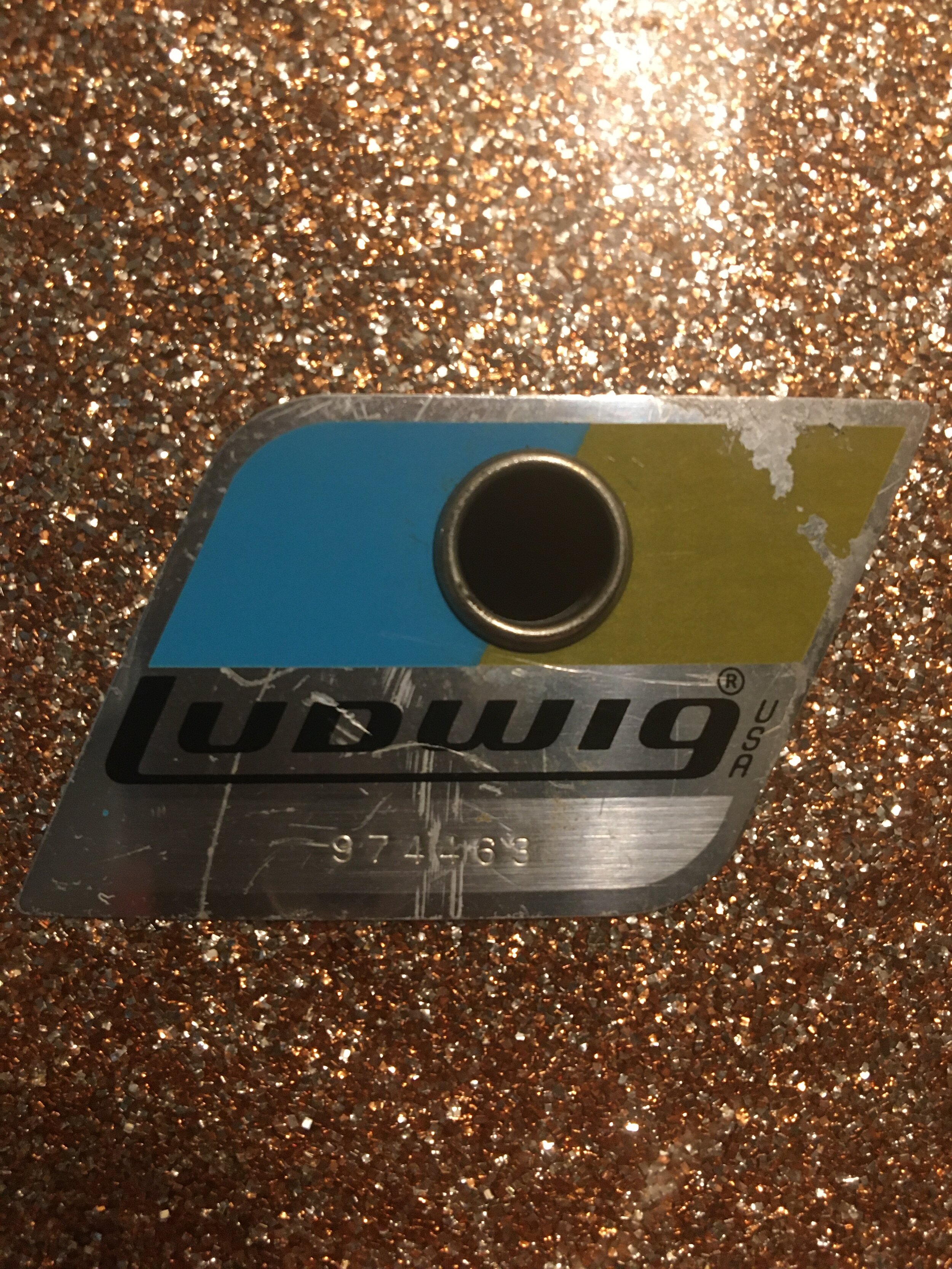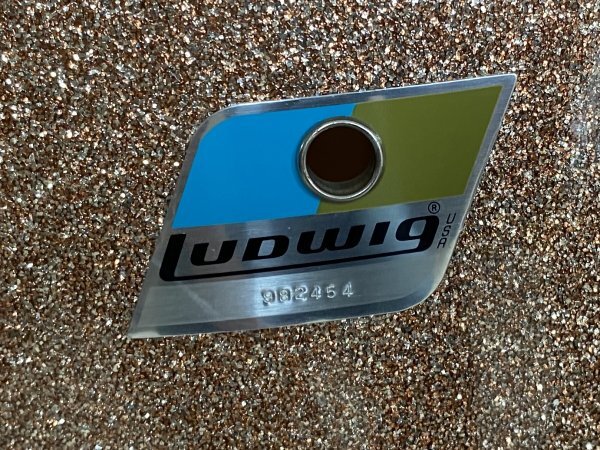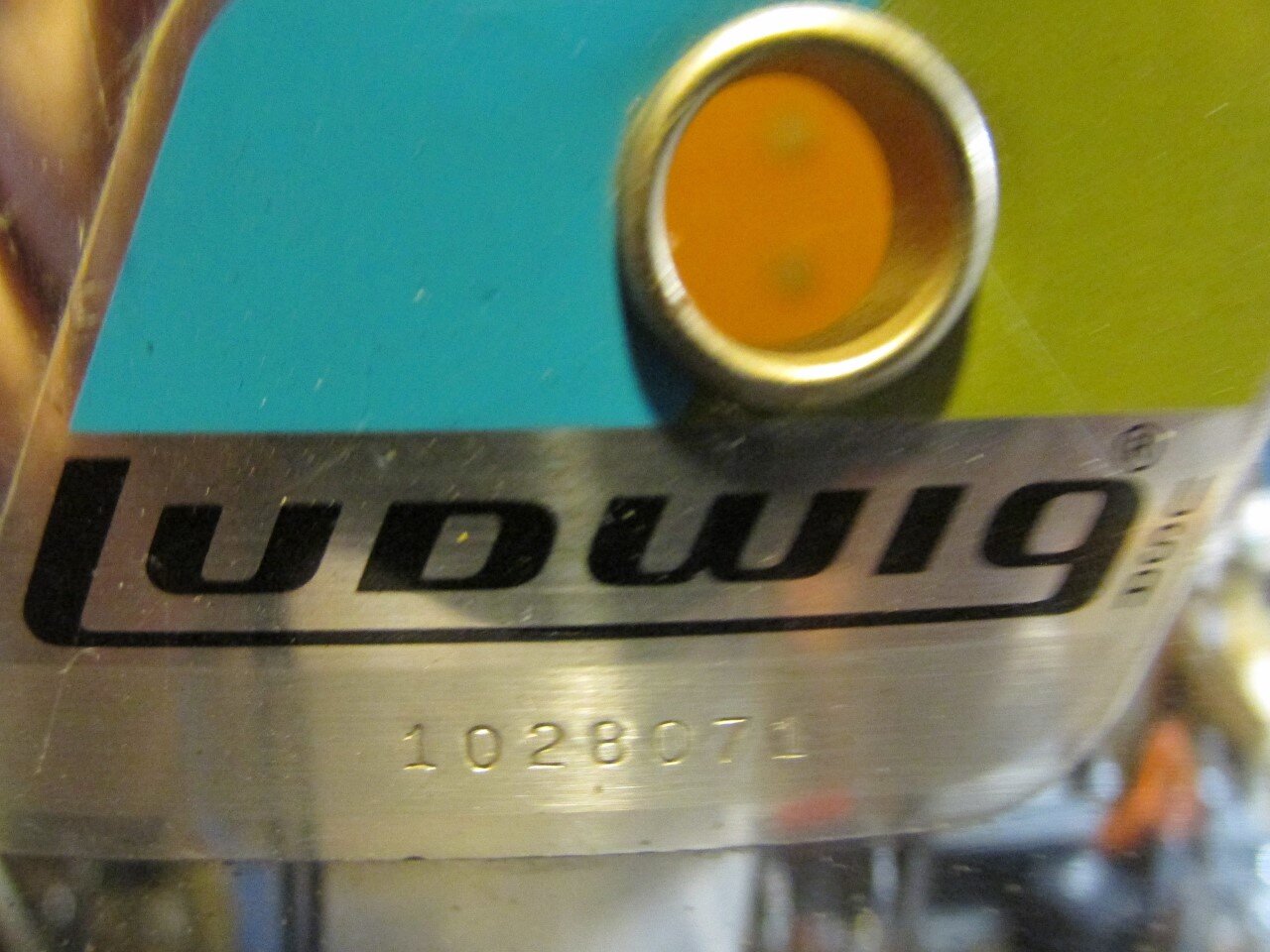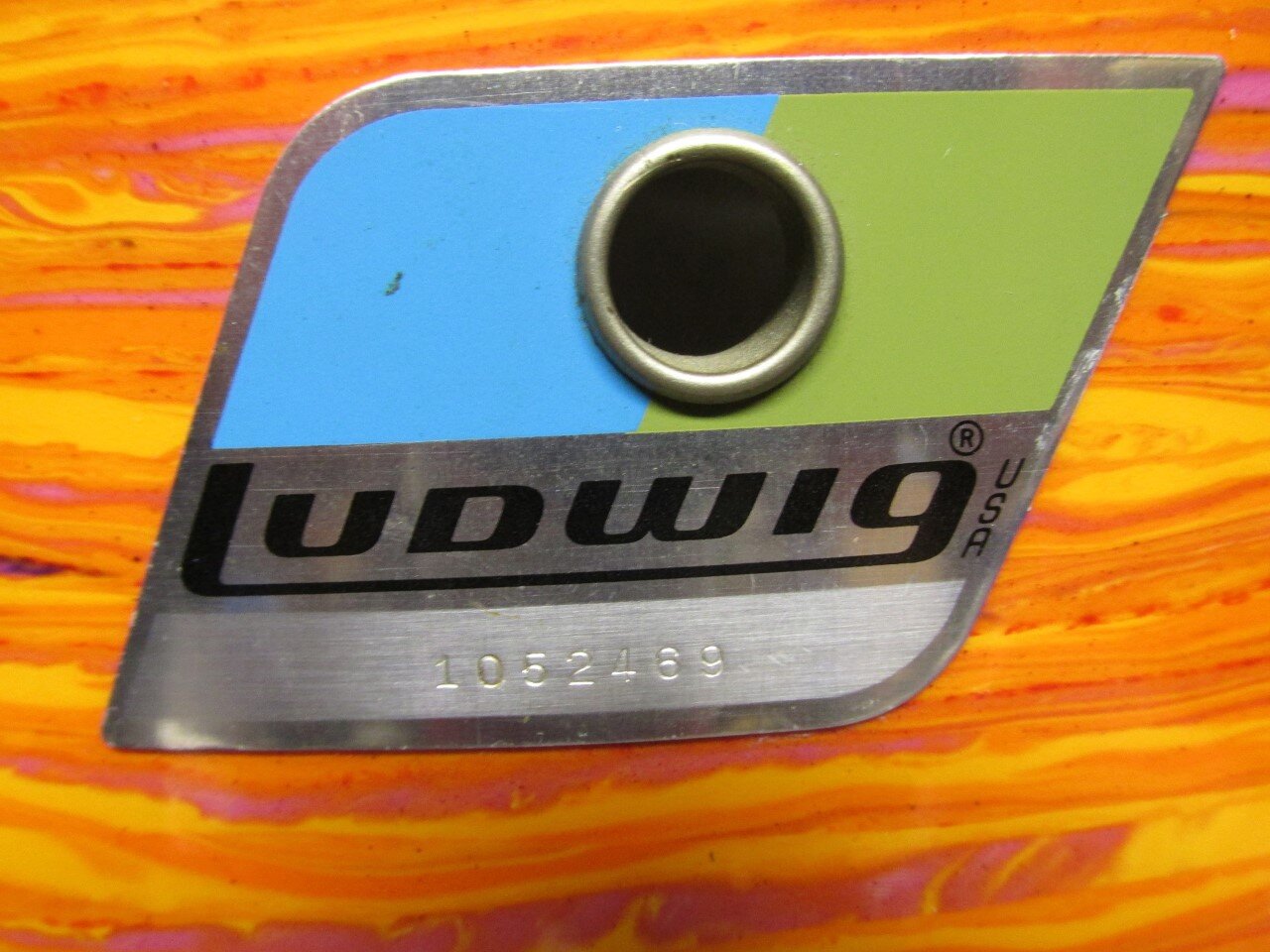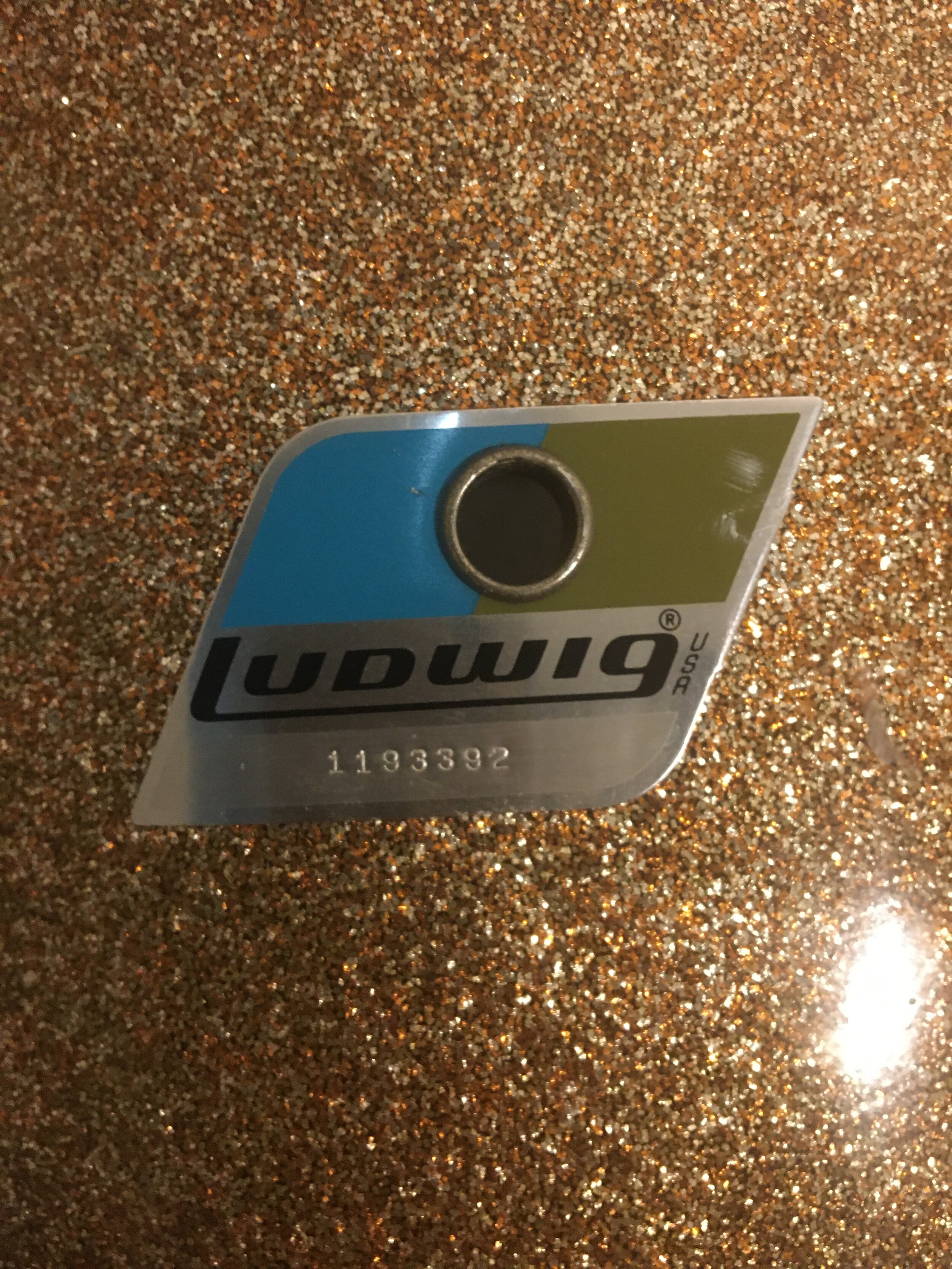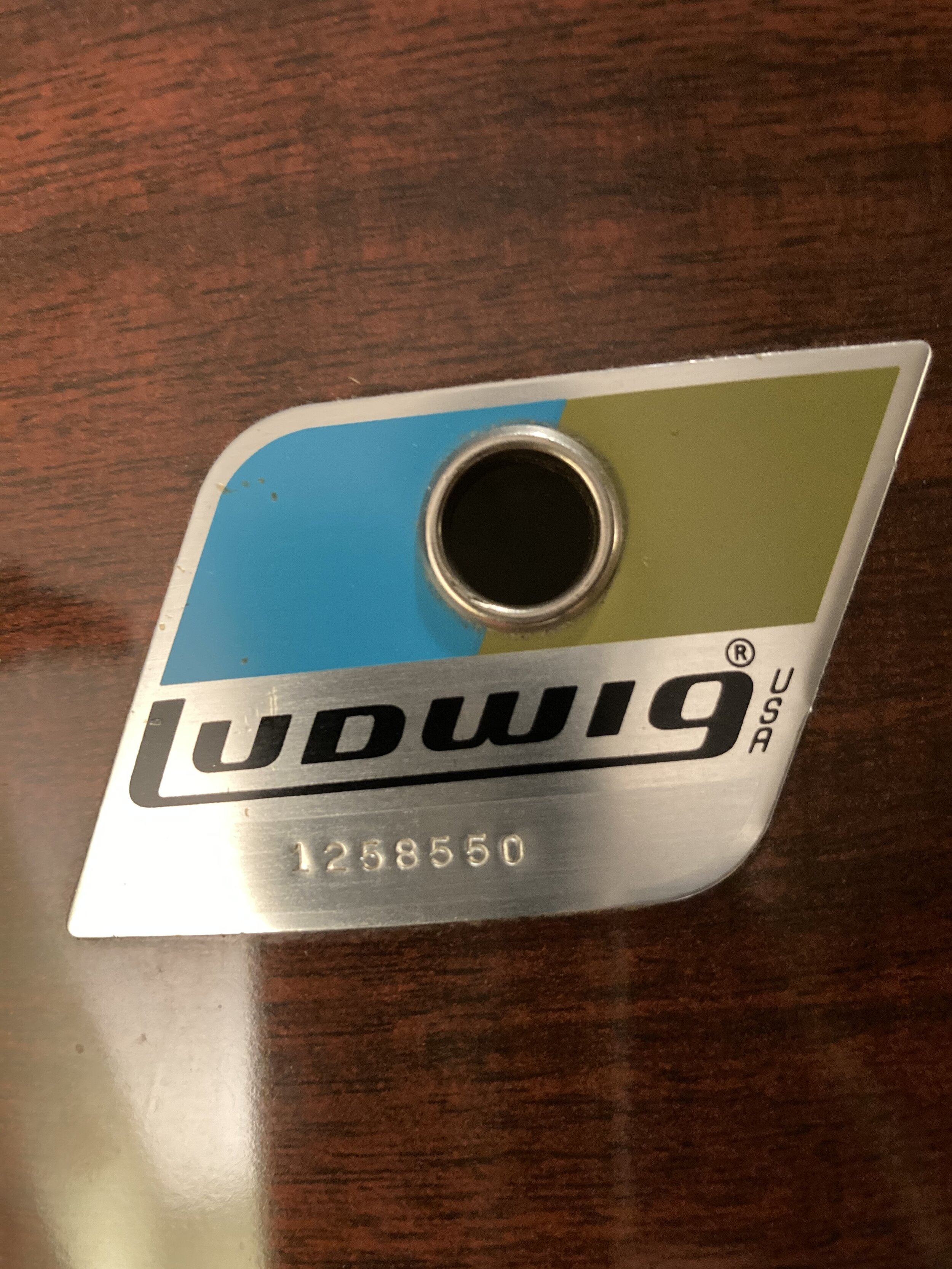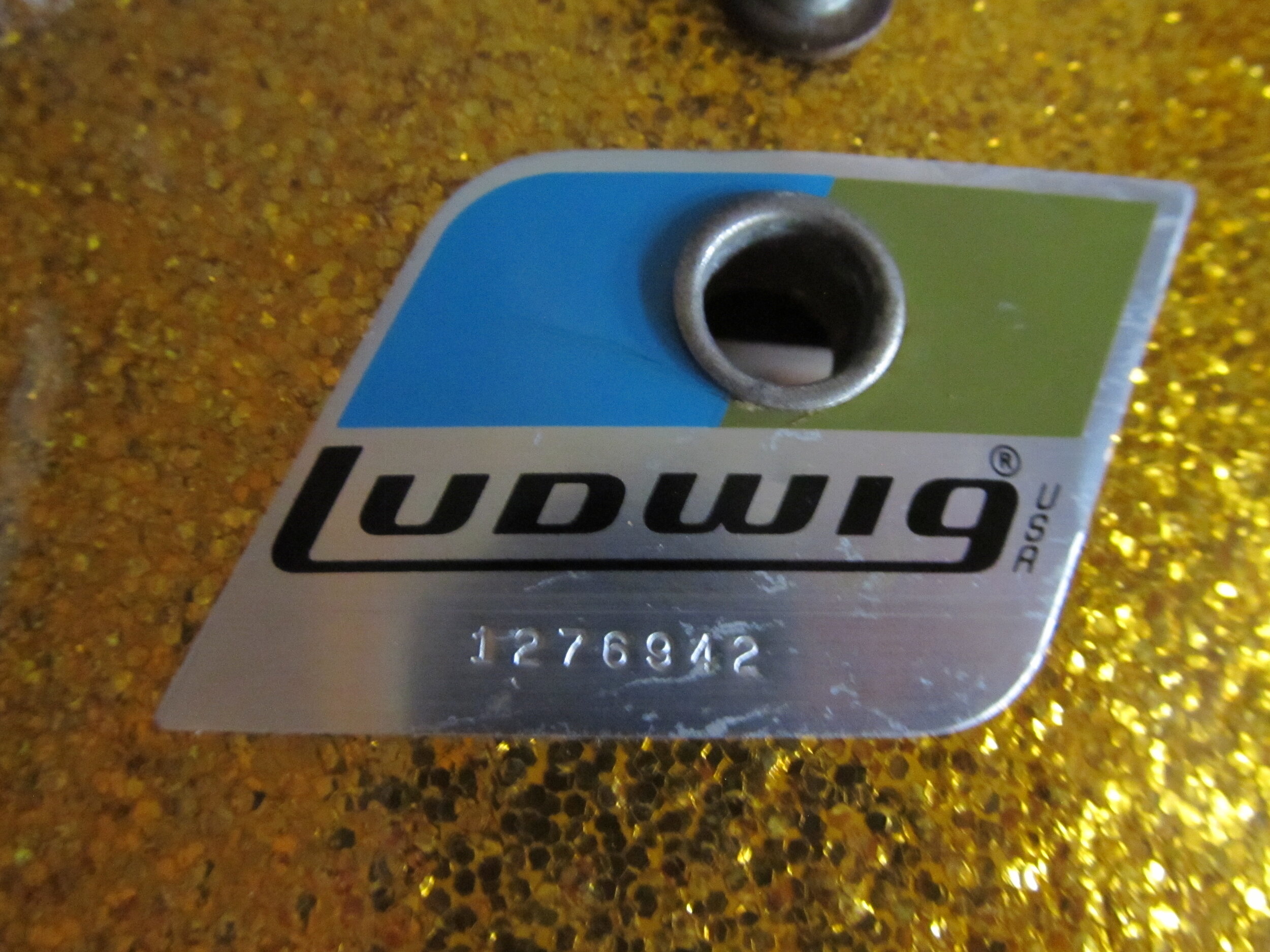Seemingly every day a Ludwig drum identified as made in 1976 is offered for sale. Every week another online poster seeking a date estimate for a Ludwig drum is told by well-meaning but self-proclaimed “experts” that it is from 1976. However, none of these drums are date stamped from 1976 and precious few are linked to original owners who bought them in 1976. So why is 1976 such a popular year for Ludwig drums? Because many people spend mere seconds of internet research to learn what year their Ludwig drum was made….and not everything posted on the internet is true.
The original source for dating 1970s blue/olive badge Ludwig drums is a table shown on page 210 of Rob Cook’s The Ludwig Book.[1] Mr. Cook wrote this comprehensive work on Ludwig drum history in 2003. In it, he devoted one page to serial number-based dating. On that page he offered a dating guide which addressed Keystone badge drums of the 1960s and blue/olive badge drums from the 1970s. Because Ludwig discontinued date stamping its shells at the end of 1971/early 1972, dating drums after 1971 is challenging. Mr. Cook was the first to respond to that challenge.
Most who search for guidance for dating of blue/olive badge drums gets an answer based upon Mr. Cook’s work. Not only is his book in the library of many vintage drum enthusiasts, his table or information taken from his table is presented:
1. on the Ludwig Drum Company website (https://www.ludwig-drums.com/en-us/ludwig/serial-guide) with some mistakes and without attribution to Mr. Cook,
2. on the Vintage Drum Guide (http://www.vintagedrumguide.com/serial_numbers.html), with appropriate attribution to Mr. Cook,
3. on several other websites without attribution to Mr. Cook, and
4. on posts on online vintage drum forums and in Facebook groups.
Mr. Cook called upon several people in the vintage drum community for assistance with his dating guide. Two of these resources were Italian collector Paolo Sburlati and American Ludwig enthusiast Mike Machat. Mr. Sburlati documented his collection of Ludwig drums in his 1999 book entitled, Ludwig: Yesterday and Today.[2] Mr. Sburlati pictures a blue, solid white and red Pattern “A” banded Vistalite set on page 63 which he dates to 1976 because its color choice links it to the American bicentennial celebrated that year. This set, which he refers to as a “Spirit of America” model, has serial numbers from 1255XXX to 1290XXX. A second set, this one sporting a silver, red and blue sparkle banded wrap and shown on page 42, is also assigned a 1976 date for the same reason. This particular set contained drums with what Mr. Sburlati describes as “special 6 digits [sic] serial numbers 89XXXX.”
Mr. Machat’s self-published a list of date stamps and serial numbers gathered from over 300 Ludwig drums in 2002.[3] On Mr. Machat’s list, there is a seven-piece double bass Champagne Sparkle set with a Supraphonic snare with a date of February 1, 1972, which had serial numbers ranging from 880719 to 916457.
Taking the reports from Mr. Sburlati and Mr. Machat as accurate, Mr. Cook faced the difficult task of reconciling two sets with serial numbers in the same range reportedly made four years apart and two sets with serial numbers 400,000 apart reportedly made during the same year.
It required quite a bit of stretching, but Mr. Cook establishes 916xxx as the highest serial number for drums associated with 1972 and 917xxx as the lowest serial number associated with drums from 1976. This compromise placed Mr. Machat’s report of serial number 916457 in 1972 while almost including Mr. Sburlati’s bicentennial inspired 89XXXX drums in 1976. As a result, Mr. Cook’s guide shows serial numbers ranging from 917XXX – 1290XXX as belonging in 1976, a total of 373,000 different serial numbers. It seemed like a reasonable compromise based upon the data available at the time and relying upon the accuracy of the information provided to him. But Mr. Cook was forced to twist and contort considerably. Mr. Cook’s guide shows only 20,000 drums in 1972 (896xxx – 916xxx) and no serial numbers associated with 1973, 1974, 1975 or 1977. Although some have questioned the accuracy and completeness of this guide, it seems that the majority have embraced it as gospel truth. The result is that a large number of drums are believed to have been made in 1976.
I contend that Mr. Sburlati’s date estimate for the 89XXXX set is off by several years. I suggest that Mr. Sburlati incorrectly linked his two “patriotic” sets together, the banded Vistalite set and the similarly banded sparkle wrapped set. This incorrectly placed the 89XXXX set in 1976. He even seems to acknowledge that the 89XXXX serial numbers seemed out of place for the 1976 date when he described the serial numbers themselves as “special.” Incidentally, the Vistalite set may also not be from 1976, as pattern “A” banded Vistalite sets were available before then.
Based upon information and insight available today, there is little to point to 1976 as a production date for the 89XXXX set. The pictures and description in Mr. Sburlati’s book do not provide much detail about this set. Fortunately, data gathered to support my dating guide is quite enlightening.[4] I spoke with Mr. Sburlati, who did not have additional support for his date estimates beyond what he includes in his book. I also spoke with C&C Drum Co. owner Bill Cardwell, the individual who located many drums in the US and shipped them to Mr. Sburlati in Italy. He told me that he did not possess specific manufacture dates for these drums. I recorded 113 examples of Ludwig drums with serial numbers in the 890000-900000 range. Of the 50 for which the specific badge type is known, all are the first style of blue/olive badge, which was in use only through about 1972. All 48 which have date stamps are dated in 1971. Thirty-four have Date Codes, which were recently shown to have been used by Ludwig only in 1971 and 1972.[5] Every piece of information I gathered indicates a 1971-1972 manufacture date for the 89XXXX set rather than 1976.
For completeness, I must also point out that Mr. Machat’s 916547 drum is not necessarily from February 1, 1972, as originally reported. Mr. Machat’s graciously shared with me his unpublished notes which revealed that this drum had Date Code 21720, not a date stamp reading FEB 1 1972. In separate research, I write about Ludwig’s use of paper labels in its drums from April 1971 through about April 1972.[6] It was during this time that Ludwig introduced Date Codes like the one found in the 916547 drum. Although I do not believe that this Date Code should be interpreted to mean the specific date of February 1, 1972, based upon recent analysis, early 1972 is a reasonable date estimate for this drum. Therefore, the application of a February 1, 1972 date to the 916547 drum did not have the profound impact that Mr. Sburlati’s “bicentennial” 89XXXX drums did on Rob Cook's guide.
One lesson learned here is when you see a listing for a drum from 1976, think twice before believing that date. A related lesson is that if you have drum with a serial number in the lower part of Mr. Cook’s 917xxx – 1290xxx range, do not describe it as being from 1976. There is no harm just listing the serial number and letting others take their best guess. They will probably look it up online, and just perhaps they will see this article and think twice before declaring it to be from 1976.
Note that I am grateful to Rob Cook, Paolo Sburlati and Mike Machat and others who shared information about their collections and took the effort to gather data, create dating guides and share their thoughts with me. They built the foundation upon which I built my own guide. Mr. Cook published both of my dating guides, including one for Ludwig which identifies the over-identification of drums from 1976. I only point out discrepancies in order to improve the information available. We are all working to raise the level of collective knowledge about vintage drums. It is just unfortunate that one drum set, incorrectly reported to be from 1976 due to its patriotic coloring, had such a huge negative impact upon Ludwig drum dating.
[1] Rob Cook, The Ludwig Book, Rebeats Publications, Alma, MI, 2003.
[2] Paolo Sburlati, Ludwig: Yesterday and Today, Paolo Sburlati Enterprises, Turin, Italy, 1999.
[3] Mike Machat, Serial Number and Date List for Vintage Ludwig Drums (1963-1972), self-published, 2002.
[4] Richard E. Gier, Serial Number Based Dating Guides for Vintage Ludwig Drums: Main Line Drums 1963-1984 & Standard Drums 1968-1973, Rebeats Publications., 2013.
[5] Richard E. Gier, “Ludwig’s Use of Paper Labels in 1971/1972 – Date Stamps and Date Codes” posted to www.gretschdrumdatingguide.com, July 14, 2020 and soon to be published on www.NotSoModernDrummer.com, August 2020.
[6] Id.
© Richard E. Gier, 2020 All Rights Reserved

